
“Kubrick: and beyond the cinema frame”
An in-depth analysis of
2001: A SPACE ODYSSEY
Text copyright © by Rob Ager 2008
(last updates added 2015)
CHAPTER 13
WHAT PLANET WAS KUBRICK ON?
Now let’s explore a very strange feature of the story – the design of the Discovery ship. It seems to hint of many things – the bone thrown by the ape, a single sperm in the void, a spinal column, an eyeball on a stem or a ball and chain. Its spherical front end appears smaller from outside than it does inside. The artificial gravity wheel, podbay, airlock, HALs brain and cockpit seem to be incredibly well packed into this sphere. Kubrick had most prints and diagrams of the films special effects destroyed after production so we’re left with what we see on screen as a measure of the Discovery’s internal space.
I believe the Discovery was designed to fulfill several metaphors at once, but here’s a particularly interesting one. Its spherical front section has prominent grey stripes or bands that are faintly similar to those of Jupiter … and if the Discovery sphere is intended to visually mimic Jupiter then the open pod bay doors could be a parallel of Jupiter’s great red spot.

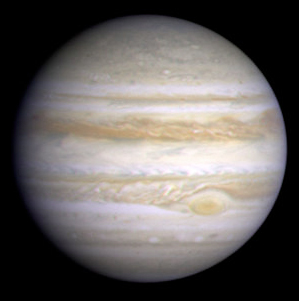
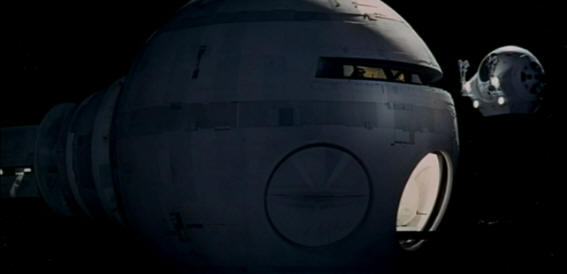
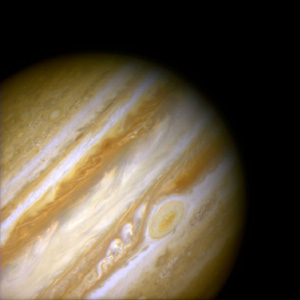
So why isn’t the discovery sphere Brown like Jupiter? Well obviously the visual connection would then be too easy to crack, but it’s also because the sphere represents the moon and the Earth as well. It represents all three celestial bodies rolled into one.
Have you ever noticed the similarities between the Discovery ship and the spherical craft that takes Floyd to the moon’s surface? The connection can be found most easily by comparing two shots.
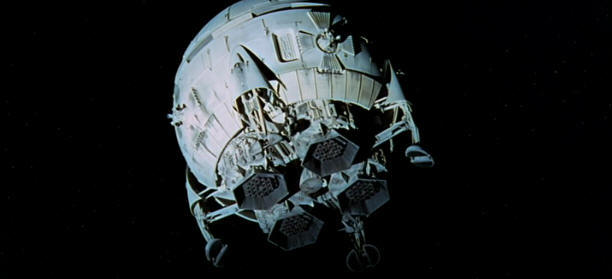
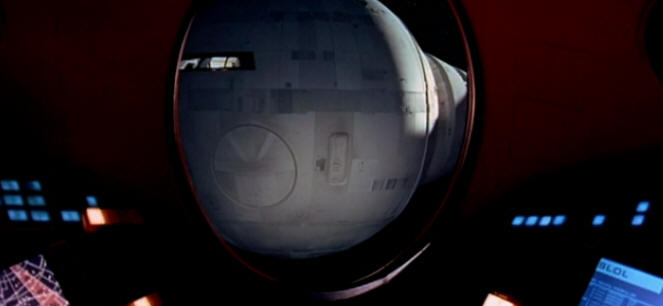
One is a low angle shot of the lunar lander, in which we see four mechanical legs slowly extending downward. The detail of the ship is easy to make out, which includes an airlock door (and possibly a maltese cross). The other shot is a view of the Discovery sphere seen through Bowman’s pod when he is trying to get back on the Discovery. The doors in both shots are almost identical.
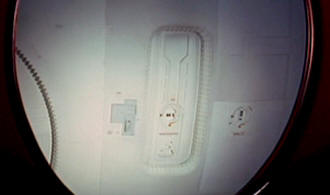
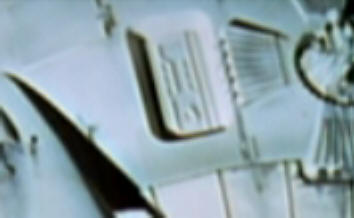
One scene features extending mechanical legs, while the other features extending mechanical arms.
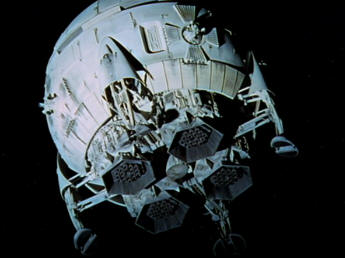
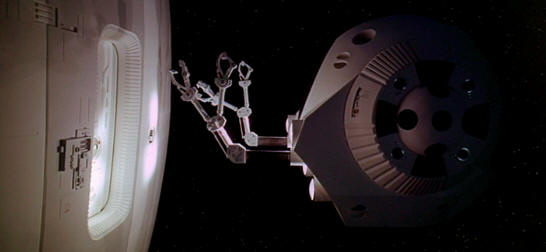
The lunar craft lands at Clavius and is then taken into a red hangar area where it aligns with sets of long white rectangles in the walls.
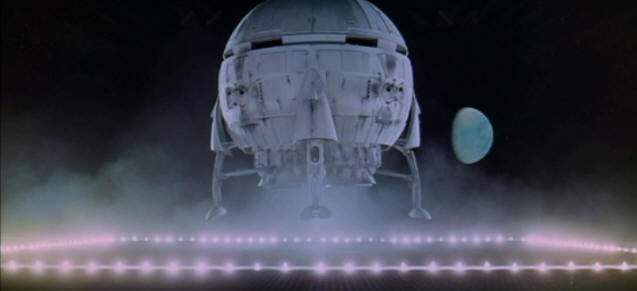
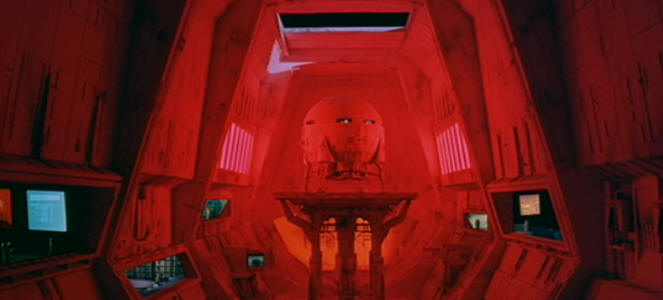
In parallel, Bowman’s pod symbolically lands on the surface of the Discovery sphere. Dave then goes inside through the airlock and makes his way to HALs red interior where he aligns himself with the white rectangular cells of HALs brain.
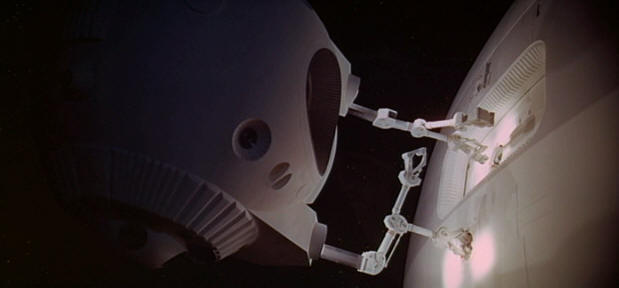
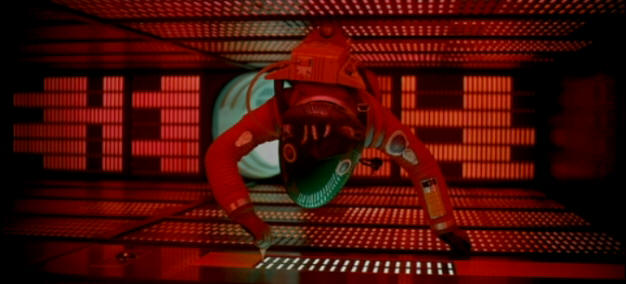
Bowman’s survival of the vacuum of space, which is often sited as unrealistic, could also be explained by this metaphor of the discovery as a planet. He survives because there symbolically is an atmosphere to be breathed. One set of production stills from the excavation shows the astronauts lined up in front of the monolith, seemingly in character, but without their helmets. This would be impossible unless, as we already explored in chapter 12, the astronauts weren't even on the moon and were staging the alien find. These photos could simply be passed off as a rehearsal, but considering the hundreds of other subliminal messages in 2001 it could go either way.
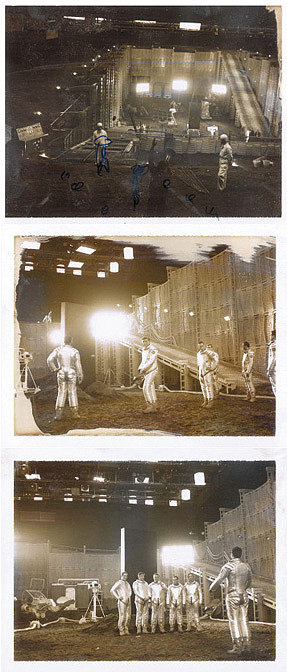
In the main marketing poster for 2001, which is hand painted, the presence of the Torus ship indicates that the planet in the background is Earth, but look at the continents of the planet. They are coloured like the Earth, but they’re formed in square patches like the patterns on the Discovery sphere. No artist worth their salt would paint such an unconvincing view of Earth's continents for a big budget film unless they were asked to. (Update 11th Nov 2013: It does in fact appear that SK asked for the Earth to be painted in this way. He had selected the bizarre choice of a Gemini 11 photo of Ethiopia and Somalia for the appearance of continents in the poster - see below. Why didn't he pick a photo with more recognizable continents? Thanks to Derek Heatly for this information) The small moon in the poster also features a dark patch perhaps symbolising it as an eyeball / pod. This is a strong indication of the Discovery ship as a metaphor of Earth.
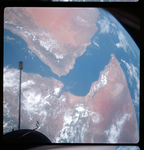
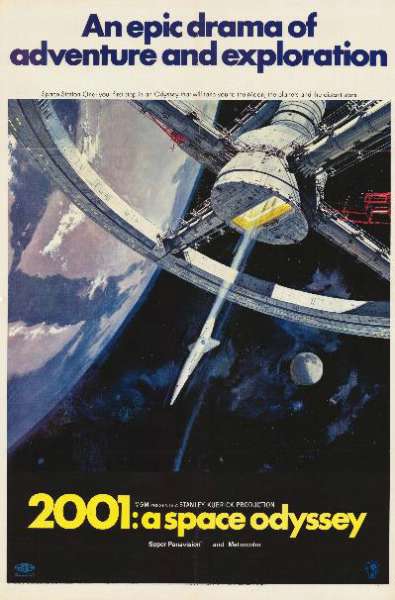
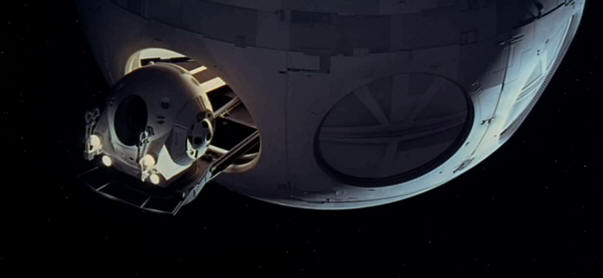
A less distributed poster shows the Discovery floating near Jupiter. A moon in the backdrop is roughly the same size as the Discovery sphere, which could be hinting at their cross symbolism. Again we have a large planet to the left. It is a very poor rendition of Jupiter and, like in the former poster, it has patchy rectangular areas. A very interesting thing in this painting is that the pod in the foreground has rocket flames coming from underneath. At no point in the movie do the pods use this kind of propulsion. Also note the bluish area stretching across the background - is this a galaxy or a planetary surface?
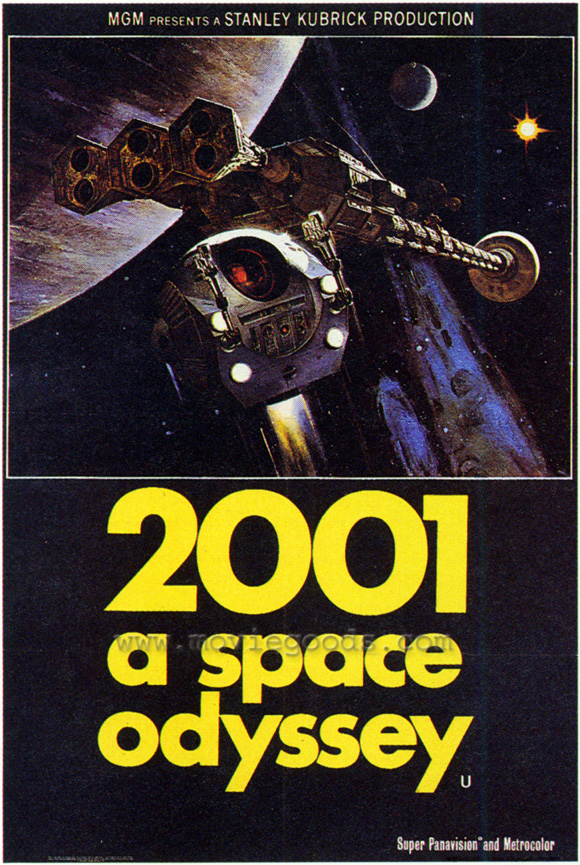
Similar to the rocket boosted pod in the above painting, the ship that takes Floyd to the moon also has fire shooting out from underneath it in some of the painted posters.
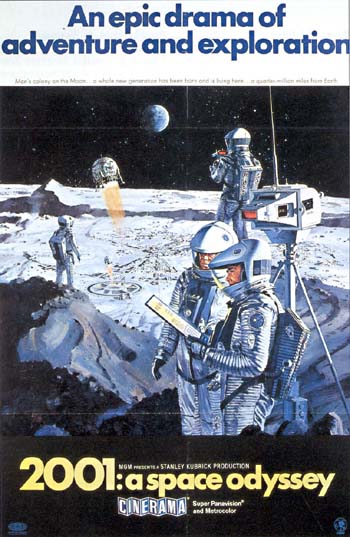
So there are plenty of indicators that the discovery is a symbolic synthesis of the Earth, the moon and Jupiter. The pods and sperical lunar landing craft also seem to be representing celestial bodies of some sort. We already know that each pod represents an enlightened eye, which is also a symbol of the sun. So the repeated shots of a pod emerging from behind the Discovery could be representing the sunrise over a celestial body, like we see in the opening shot of the film.
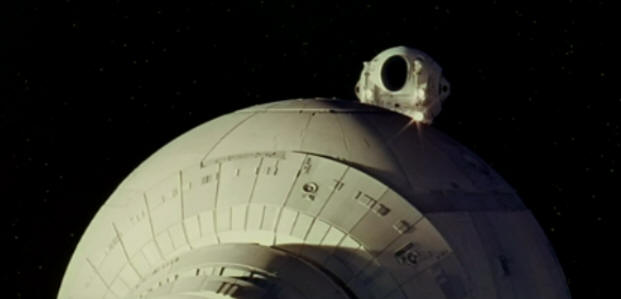
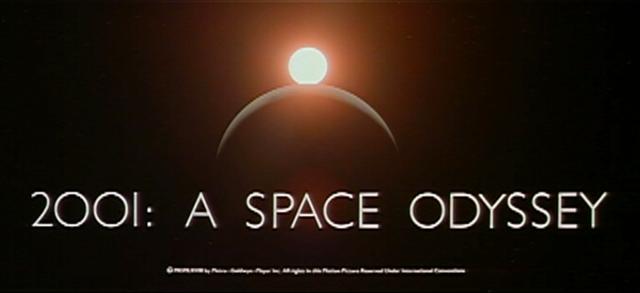
Kubrick makes clever use of interchangeable moon and planet images. The floating monolith does not pass in front or behind anything and so its scale is ambiguous. Like wise, there is only one shot in the whole movie where a spacecraft is seen overlaying a distant moon or planet - the Discovery when it appears down screen behind a giant Jupiter crescent before the stargate.
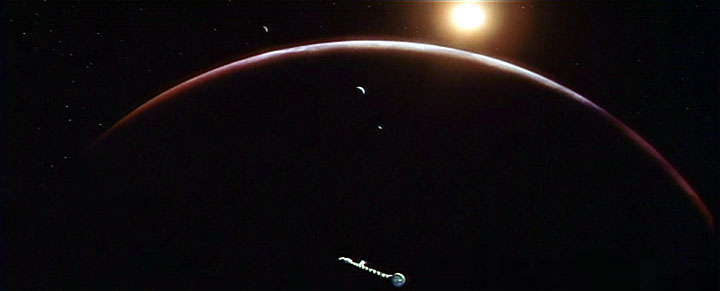
The moons and planets themselves also tend not to overlap each other, except in the opening shot of the sunrise and in a couple of the Jupiter shots. This effectively means that most of the time the sizes of moons and planets are subjective based upon our own assumptions. When we see what looks like Jupiter, its moons are in separate portions of the screen. Are the scales of these celestial bodies inverted so that we are seeing a small scale fake Jupiter that is actually much closer?
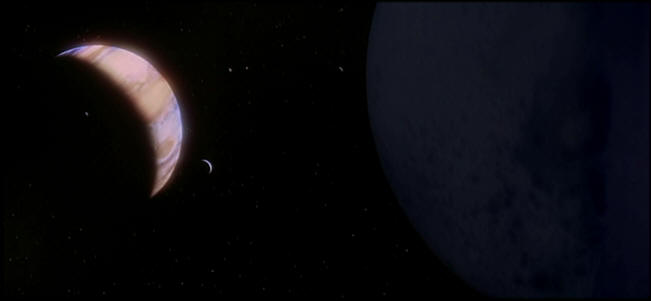
The shots in which moons and planets do overlap each other are usually lit from behind so that we don’t know which celestial bodies we’re looking at.
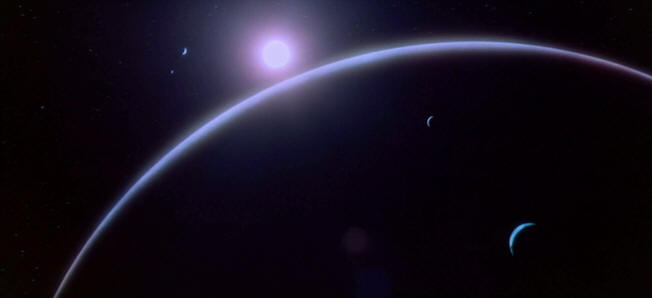
Even Bowman’s pod might be hiding among the vertical alignment of moons in the last shot before the stargate, itself passing for a distant moon.
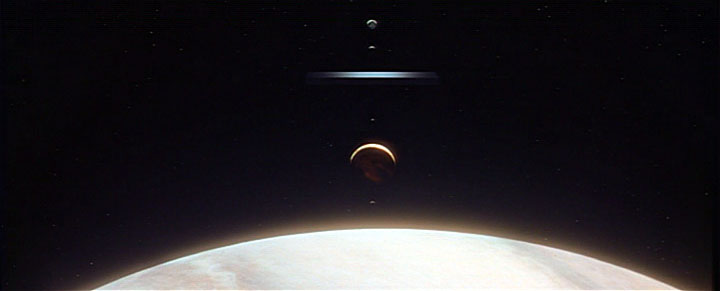
You may be wondering what the hell all this has to do with the storyline, but it actually fits in very well with the hidden narratives of fake moon landings and technological enslavement. The confusion over celestial scale and distance communicates that the characters don’t know what planet they’re on. They only know what HAL or Floyd and the council tell them.
The “Jupiter mission” could be a moon mission or an Earth mission of some description. Judging from the faint haze that illuminates the sides of the Discovery, the ship may not have even left Earth’s orbit. These parts of the ship should be in total darkness unless they are being illuminated by light reflected from a nearby solar body.
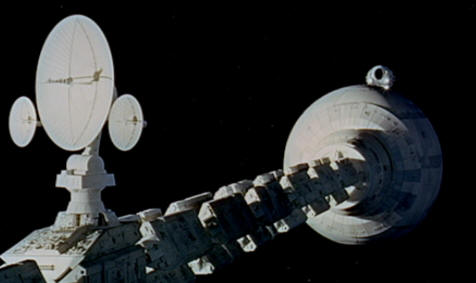
One shot even suggests that the entire Jupiter mission is being staged in some way – as Bowman prepares to approach the antenna, the pod rotates and in its window we can see lights and a faint brownish landscape of some sort reflecting across the glass. These reflections should not occur in space, especially with the sun shining in from a totally different direction.
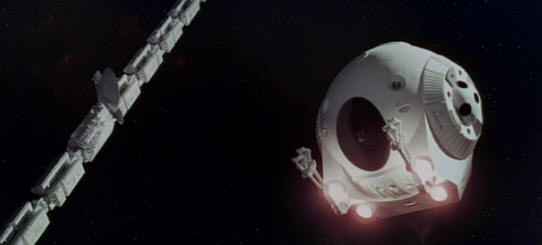
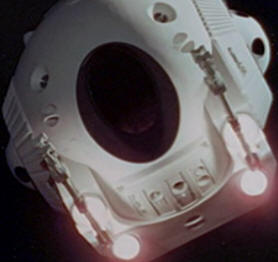
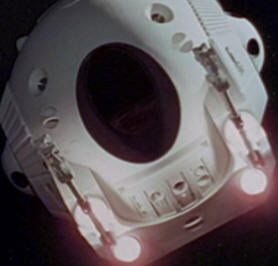
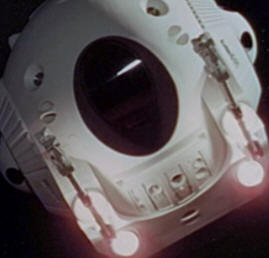
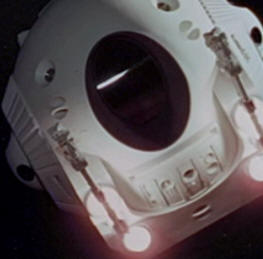
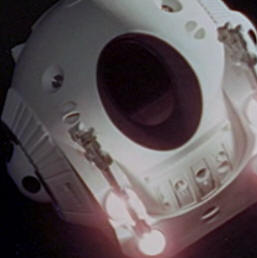
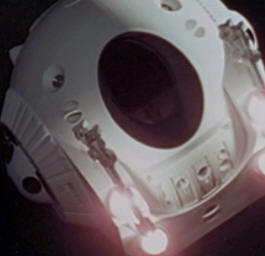
Here they are again with increased brightness and contrast to bring out the details.
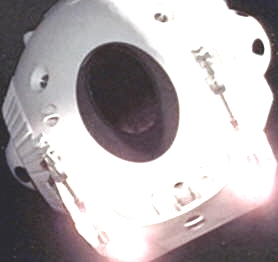
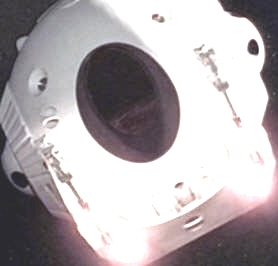
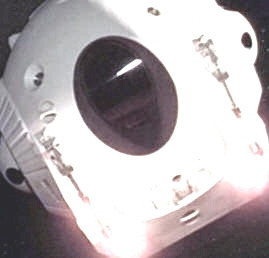
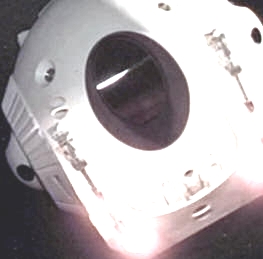
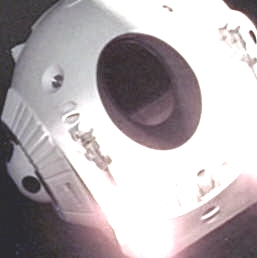
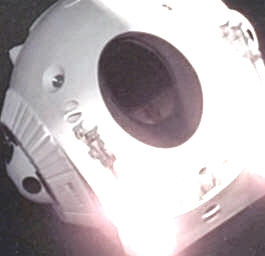
Another possible visual association, and I know this is really pushing it, is that the location referred to by Floyd as "Clavius" is an actual lunar crater formation on the moon. Notice the similarities with the triple satellite dish on the Discovery.
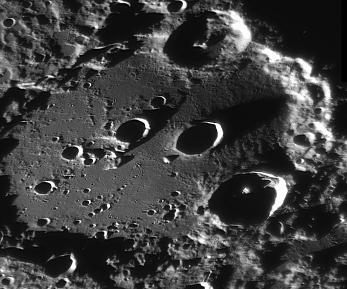

Some other details that may tie in with these themes are Bowman’s comment in the pod about continuing the mission under “ground based computer control” and the fact that three astronauts made the actual moon voyage in 1969. At several points in 2001 we are presented with three astronauts, such as the ones seen on the lunar mountain or the three hibernating crew members who HAL kills in their sleep. Bowman also stated in the BBC 12 broadcast that "the three hybernating crew members represent the survey team." The fact that we are not shown photos of them suggests they have a symbolic identity of some sort.
Floyds announcement about the purpose of the Jupiter mission features a large image of what is probably the Earth and the moon projected behind him. The flickering quality of the image is strange, as is the square shape of the screen. What is definitely interesting is that he is also seen with the Earth projected behind him in a square window when he chats to his daughter.
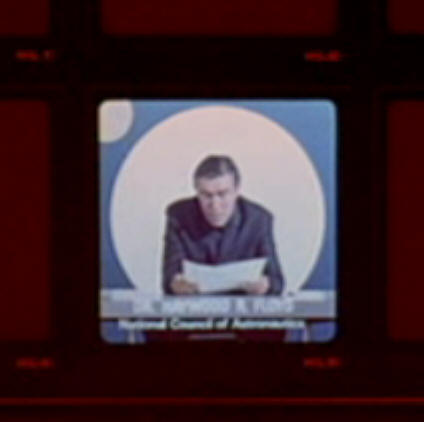
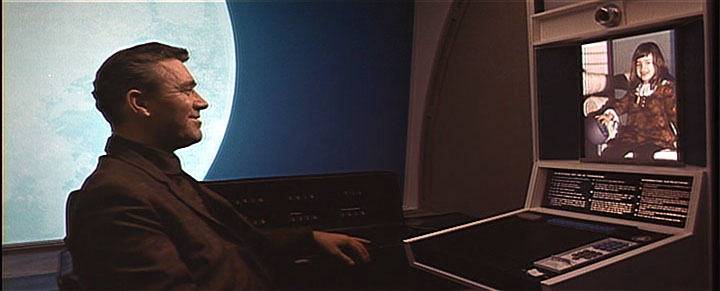
The implication here could be that Floyds announcement of a mission to Jupiter is childish nonsense and holds no more credit than the conversation with his daughter. Note: Floyd also tells his colleague that he has to make a couple of phonecalls, but we only get to see the one where he calls his daughter – who were the other ones to?
Perhaps the observations in this chapter are yet another hint that the fight between Bowman and HAL is a stuggle between Earth monopolists and their enslaved subjects. The technologically trapped crew of the discovery live in a reality that has been turned inside out and upside down. They have become lost in a dark void with little sense of time or space and it is HALs intention to keep them there.
We already know that Bowman won the battle at the end, but at what cost? All his colleagues are dead ...
... aren't they?